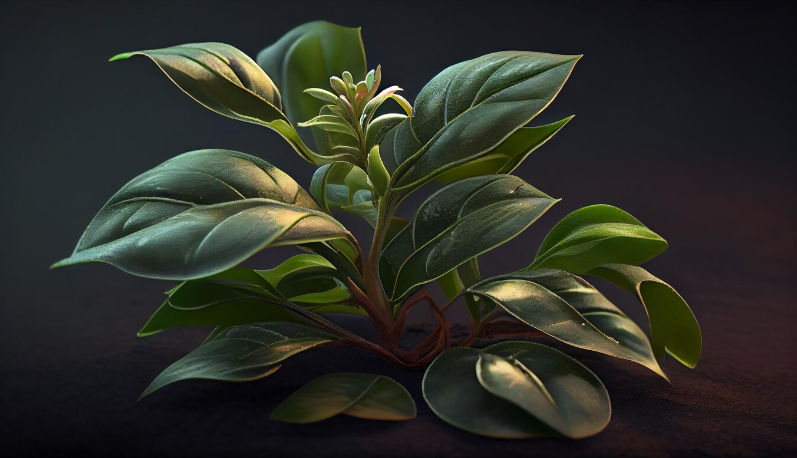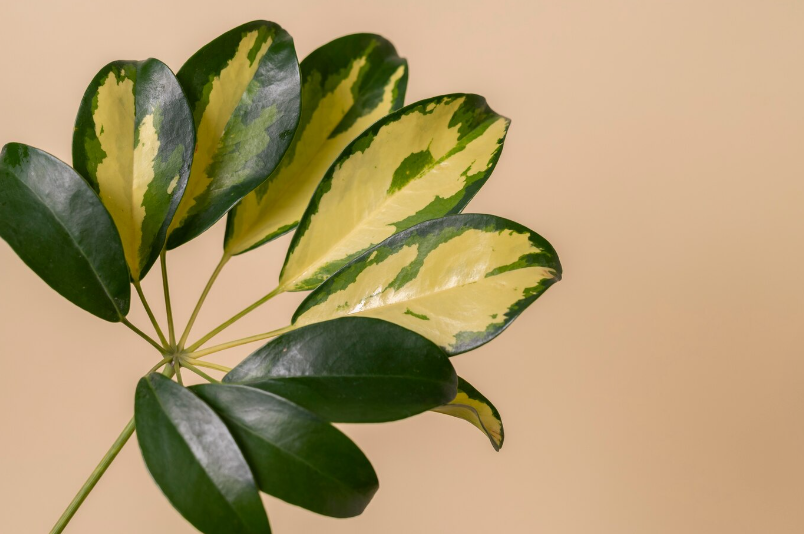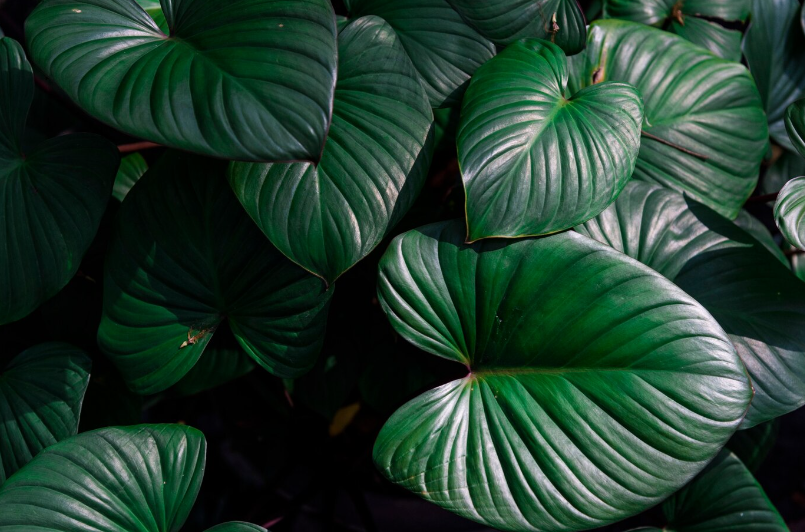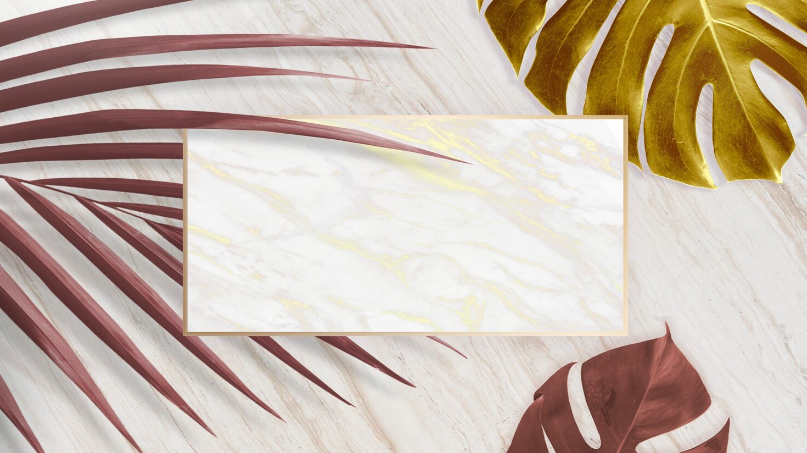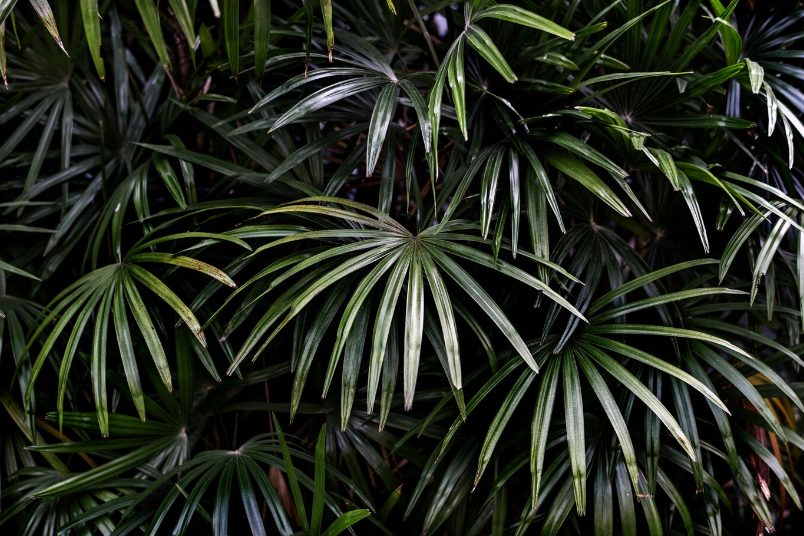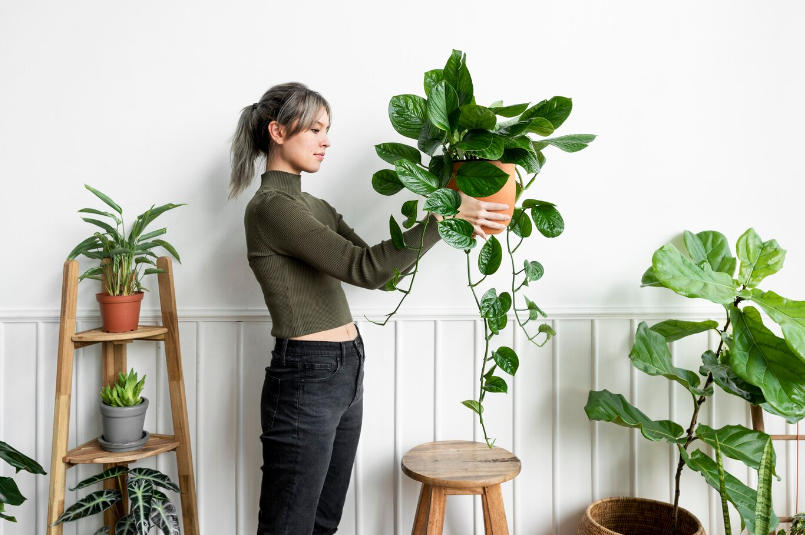Exploring the Ancient Origins of Philodendrons: A Journey Through Time
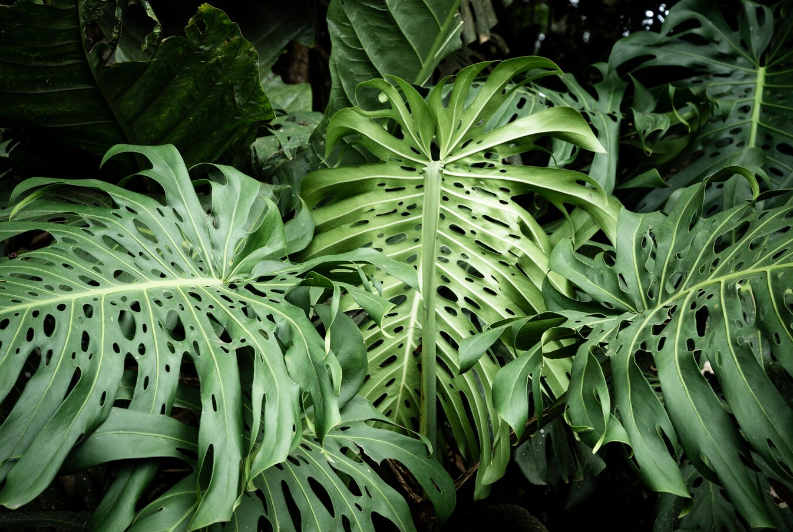
Imagine a lush tropical forest, where sunlight filters through a thick canopy of leaves, casting a gentle glow on the forest floor. Amongst the myriad of plant species thriving in this vibrant ecosystem, one stands out with its distinctive heart-shaped leaves and elegant climbing vines: the philodendron.
But did you know that philodendrons have a rich history that dates back millions of years? These resilient plants have survived and adapted through countless environmental changes, evolving into the diverse range of species we see today. Join us on a fascinating journey back in time as we explore the ancient roots of philodendrons and discover their role in shaping the ecosystems of the past.
The story of the philodendron begins in the distant past, when the Earth was a vastly different place. Dinosaurs roamed the land, and the continents were still taking shape. It was during this time, known as the Cretaceous period, that the first ancestors of the philodendron appeared. These early plants, known as “ferns on steroids”, were among the first to develop the ability to climb and hang from trees, a characteristic that would later define the philodendron family.
As the world changed and the continents shifted, philodendrons spread across the globe, adapting to a variety of environments along the way. From the steamy rainforests of South America to the arid deserts of Africa, philodendrons evolved unique traits to survive in each habitat. Their ability to store water in their leaves, for example, enabled them to thrive in the dry, harsh conditions of desert regions.
Today, philodendrons continue to captivate and inspire botanists and plant lovers alike. Their ancient roots have left a lasting impact on the world around us, reminding us of the Earth’s incredible ability to adapt and transform. So, the next time you marvel at the beauty of a philodendron, take a moment to appreciate its journey through time and the important role it plays in our natural history.
Unearthing the Historical Significance of Philodendron Plants
Philodendron plants have a rich history that dates back thousands of years. These tropical beauties have been revered by ancient civilizations for their various uses and exceptional beauty.
In ancient times, philodendrons were highly valued for their medicinal properties. The leaves of the philodendron plants were used to treat ailments ranging from digestive issues to skin irritations. The ancient Egyptians, Romans, and Greeks all documented the healing powers of this versatile plant.
Aside from their medicinal uses, philodendrons also held great cultural significance. In many ancient civilizations, philodendron plants were considered symbols of fertility and abundance. They were often used in religious ceremonies and rituals to invoke prosperity and blessings.
The versatility of philodendron plants was not limited to their medicinal and cultural uses. Many civilizations also recognized the decorative value of these plants. The vibrant green leaves and unique shapes of philodendrons made them popular choices for adorning living spaces and gardens.
One of the most interesting historical connections of philodendron plants is their association with the ancient Maya civilization. The Maya people used philodendron plants in their agriculture, as the leaves were known to provide shade and retain moisture for other crops. Additionally, the natural growth pattern of philodendrons inspired the Mayans’ architectural designs.
Today, the historical significance of philodendron plants can still be seen in their widespread popularity. From ancient civilizations to modern homes, these plants continue to captivate people with their beauty and versatility.
| Ancient civilizations that revered philodendron plants: | Historical uses of philodendron plants: |
|---|---|
| Egyptians | Medicinal properties |
| Romans | Religious ceremonies |
| Greeks | Decorative value |
| Maya | Agriculture and architectural inspiration |
The Origin and Evolution of Philodendrons
Philodendrons are a fascinating group of plants with a long and rich history. Belonging to the family Araceae, these plants have their origins in the tropical rainforests of Central and South America.
The evolution of philodendrons can be traced back millions of years, as these plants have adapted to survive in a wide range of environments. Fossil records show that philodendrons have been growing on Earth for at least 70 million years.
Philodendrons have undergone significant changes over time. Early species of philodendrons had simple leaves and vining habits, using trees or other structures for support. However, as their habitats changed and new ecological niches became available, philodendrons evolved various strategies to thrive.
One of the most distinctive features of philodendrons is their aerial roots, which are adaptations for climbing and obtaining additional nutrients. These roots allow philodendrons to attach themselves to trees and other surfaces, allowing them to reach sunlight and absorb water and nutrients from the surrounding environment.
Another important adaptation in the evolution of philodendrons is their ability to grow as epiphytes. Epiphytic philodendrons are able to survive by growing on trees without taking nutrients from the host. Instead, they derive nutrients from the air and rainwater that collects on their roots.
As philodendrons continued to adapt and diversify, they developed a wide variety of leaf shapes, sizes, and colors. Some species have large, broad leaves, while others have smaller, more elongated leaves. Certain species also developed fenestrations, which are holes or slits in the leaves that allow for better airflow and light penetration.
Overall, the origin and evolution of philodendrons have been driven by a combination of environmental changes and adaptive strategies. These plants have managed to survive and thrive in diverse habitats, making them an important part of our natural world.
The Etymology of ‘Philodendron’: From Greek to Latin
The word ‘philodendron’ has its roots in the ancient Greek language. It is a combination of the Greek words ‘philo’, meaning ‘loving’, and ‘dendron’, meaning ‘tree’. This name was given to the plant due to its tendency to climb or attach itself to trees in its natural habitat.
The Greek word ‘philo’ can also be translated as ‘friend’. The name ‘philodendron’ therefore emphasizes the plant’s close association with trees, highlighting the symbiotic relationship between the two. Just as a friend is loyal and supportive, the philodendron depends on the tree for support and climbs its way to the top.
Over time, the word ‘philodendron’ made its way from Greek into Latin, becoming the scientific name for this group of plants. The Latin language has played a significant role in the naming of plant species, as it was commonly used by botanists and scholars in the past.
It is fascinating to discover the etymology of ‘philodendron’, tracing its origins back to the ancient Greek language and its subsequent adoption into Latin. This deep-rooted history adds a layer of meaning to the name and helps us appreciate the rich cultural and linguistic heritage associated with these plants.
Historical Uses and Early Cultivation
The philodendron plant has a long history of cultivation and use by various cultures throughout the world. In ancient times, these plants were highly valued for their decorative qualities and were often displayed in gardens and homes.
One of the earliest known uses of philodendrons can be traced back to ancient civilizations in Central and South America. The Aztecs and Mayans, for example, cultivated and used philodendrons for their medicinal properties. The sap of certain philodendron species was believed to have healing properties and was used to treat ailments such as skin infections and respiratory issues.
Additionally, philodendrons were used for various religious and ceremonial purposes. They were often included in rituals and offerings to deities, believed to bring good luck and protection. The vibrant and lush foliage of philodendrons made them valuable symbols of fertility and abundance.
Early cultivation of philodendrons involved careful observation and propagation techniques. Ancient gardeners selectively bred the plants to enhance desirable traits such as leaf size and color. They also experimented with different growing conditions to optimize the plants’ growth and health.
As trade routes expanded, philodendrons were introduced to new regions and their popularity grew. The plants were admired for their ornamental value and became common features in botanical gardens and greenhouses. Today, philodendrons are widely cultivated all over the world, appreciated for their beauty, adaptability, and easy maintenance.
Throughout history, the philodendron plant has played an important role in various cultures. Its beauty and versatility have made it a beloved plant, treasured for both its aesthetic and practical qualities.
Philodendron and Spirituality: Interpreting Ancient Beliefs
Throughout history, plants have played a significant role in human spirituality and beliefs. The philodendron, with its lush and vibrant foliage, has long been associated with ancient civilizations and their spiritual practices.
Ancient Mayans revered the philodendron for its ability to thrive in dark jungle environments. They believed that the plant served as a conduit between the earthly realm and the spiritual world. The Mayans believed that the philodendron’s deep green leaves represented the life force of the jungle and its connection to the gods.
Similarly, the ancient Egyptians regarded the philodendron as a symbol of rebirth and renewal. They associated its evergreen leaves with eternal life and used it to decorate tombs and burial sites. The philodendron was believed to guide the departed souls towards their afterlife and provide them with spiritual nourishment.
In modern times, the philodendron continues to hold spiritual significance for many individuals. Its lush foliage and ability to purify the air are seen as symbols of growth, vitality, and rejuvenation. People often incorporate the philodendron into their meditation or prayer spaces, believing that its presence can enhance spiritual connection and promote inner peace.
Whether as a symbol of life, rebirth, or spiritual connection, the philodendron has a rich history intertwined with ancient beliefs. Its timeless beauty and spiritual associations remind us of the profound connection between humanity and the natural world.
Spiritual Significance of Philodendrons in Ancient Cultures
Philodendrons have been considered spiritually significant plants in ancient cultures across the world. These plants were believed to possess healing and protective properties and were often used in various rituals and ceremonies.
For many ancient civilizations, the heart-shaped leaves of the philodendron represented love and fertility. The plant was seen as a symbol of rebirth and new beginnings, and it was often included in fertility rituals and celebrations.
In some cultures, philodendrons were also believed to have protective powers. They were thought to ward off evil spirits and negative energies, and were often placed near entrances or in the corners of rooms to provide spiritual protection for the home or temple.
Philodendrons were also used for their medicinal properties in ancient times. The leaves of the plant were believed to have healing properties and were used to treat various ailments and diseases. The plant was often brewed into teas or used in poultices for its healing effects.
Ancient cultures also believed that philodendrons had the ability to connect the spiritual and physical worlds. The plant was often used in shamanic rituals and as a tool for divination and spiritual guidance. It was believed that the philodendron could help to facilitate communication with spirits and ancestors.
Today, philodendrons continue to be valued for their spiritual significance. Many people still include these plants in their homes and gardens as a way to connect with ancient traditions and tap into the spiritual energies associated with the plant.
- Philodendrons were seen as symbols of love and fertility in ancient cultures
- They were believed to have protective powers against evil spirits
- The plant was also used for its medicinal properties
- Philodendrons were used in rituals and ceremonies for divination and spiritual guidance
- Today, the spiritual significance of philodendrons continues to be honored
Philodendron Scandens: Beyond the Veil of Symbolism
Philodendron Scandens, also known as the Heartleaf Philodendron or Sweetheart Plant, is a popular houseplant that has been cherished for its beautiful foliage and effortless care. But beyond its physical attributes, this plant holds a rich symbolism that spans across cultures and time.
In ancient Greek mythology, the heart-shaped leaves of the Philodendron Scandens were associated with the goddess Aphrodite, the goddess of love and beauty. It was believed that having this plant in the home would bring love and harmony to the relationships within the household.
In Chinese culture, the Heartleaf Philodendron is considered a symbol of good luck and fortune. It is often given as a gift to newlyweds or placed in homes and businesses to invite prosperity and abundance. The trailing nature of the plant’s vines is also associated with longevity and the flow of positive energy.
Beyond its symbolism, Philodendron Scandens is also a versatile plant that can thrive in various conditions. Its ability to adapt and survive, even in low light and neglect, makes it a popular choice for beginners and busy individuals who may not have the time to give it constant attention.
The Heartleaf Philodendron thrives best in well-draining soil and prefers indirect light, although it can tolerate lower light levels. Its trailing vines make it a great choice for hanging baskets, or it can be trained to climb up trellises or moss poles. With proper care and attention, this plant can grow into a lush and vibrant addition to any indoor space.
So, next time you admire the beauty of a Philodendron Scandens, remember the rich symbolism and history that lies beyond its leaves. Whether you believe in the power of symbolism or simply appreciate its aesthetic value, this ancient plant continues to captivate and bring joy to plant enthusiasts around the world.
The Philodendron Xanadu: A Modern Plant with Ancient Energy
The Philodendron Xanadu is a modern plant species that exudes an ancient energy, rooted in its long history. Indigenous to the rainforests of Brazil, this remarkable plant has been captivating plant enthusiasts worldwide with its vibrant green leaves and unique growth pattern.
With its dense clumps of foliage and upright growth habit, the Philodendron Xanadu instantly adds a touch of elegance to any indoor or outdoor space. Its compact size makes it ideal for small gardens and interior decoration, while its hardy nature allows it to thrive in a variety of environments.
But what truly sets the Philodendron Xanadu apart is its ancient energy. This plant belongs to the Araceae family, which has a rich evolutionary lineage dating back millions of years. It shares this ancestry with other well-known plants such as the Monstera deliciosa and the Peace Lily.
As a member of this ancient family, the Philodendron Xanadu carries within it the energy and resilience of its ancestors. It has evolved to adapt and survive in the ever-changing rainforest ecosystem, developing unique strategies for survival.
One of these strategies is its ability to regulate water usage. The Philodendron Xanadu has thick, leathery leaves that help it retain moisture, allowing it to withstand periods of drought. This trait is reminiscent of its ancient relatives, who had to navigate the fluctuating water availability in their natural habitats.
Another striking feature of the Philodendron Xanadu is its aerial roots. These roots grow from the stem of the plant, reaching out into the air in a search for nutrients and support. This adaptation allows the plant to anchor itself in the rainforest canopy, ensuring its survival despite the intense competition for light and resources.
When you bring a Philodendron Xanadu into your home or garden, you invite a piece of ancient history into your life. This modern plant carries the energy of its ancestors, reminding us of the resilience and adaptability of nature.
Whether you appreciate the Philodendron Xanadu for its aesthetic appeal or for the ancient energy it embodies, it’s undoubtedly a fascinating plant that deserves a place in our modern world.
The Botanical Wonders of Philodendron Roots
Philodendrons are known for their stunning foliage and lush vines, but there is so much more to these plants than meets the eye. One of their most remarkable features is their roots. While roots are often hidden underground, the roots of philodendrons are truly a sight to behold.
First and foremost, philodendron roots are incredibly efficient at absorbing water and nutrients from the surrounding soil. They have specialized root cells, called “root hairs,” that increase the surface area available for absorption. These root hairs also release substances that aid in nutrient uptake, making philodendrons highly adept at thriving in a variety of environments.
Another fascinating aspect of philodendron roots is their ability to adapt and grow in response to their surroundings. If a philodendron finds itself in a cramped pot or a small crevice, its roots will branch out and grow in all directions, taking advantage of the limited space. This adaptability allows philodendrons to thrive in urban environments and even survive in low-light conditions.
Philodendron roots are also known for their strong anchoring abilities. As philodendrons grow larger and develop more leaves, their vines can become heavy. The roots play a vital role in supporting the weight of the plant and keeping it upright. They anchor the philodendron to its environment, whether it’s the forest floor or a hanging basket.
Additionally, philodendron roots have been found to possess medicinal properties. Some species of philodendron have roots that contain compounds with anti-inflammatory and antimicrobial properties. These properties have been used in traditional medicine to treat wounds, infections, and even digestive disorders.
| In conclusion, | the roots of philodendrons are not just simple structures that provide stability and nutrition. They are truly botanical wonders, with their ability to absorb nutrients efficiently, adapt to their surroundings, provide support, and even possess medicinal properties. Next time you admire a philodendron plant, take a moment to appreciate the marvels happening beneath the surface. |
The Function and Adaptability of Philodendron Roots
Philodendrons are known for their lush, tropical foliage, but their roots play a vital role in their overall health and survival. The function and adaptability of Philodendron roots are fascinating aspects of these plants, allowing them to thrive in various environments.
One of the primary functions of Philodendron roots is to anchor the plant in the soil. These roots are typically thick and robust, providing stability and support to the growing plant. The strong root system allows philodendrons to grow tall and climb trees or other structures in their native habitats, helping them to access sunlight and nutrients.
In addition to anchoring the plant, Philodendron roots also absorb water and nutrients from the soil. The root system of Philodendrons is well-adapted to their natural environment, with specialized structures that maximize their ability to absorb water and essential minerals. These adaptations include fine root hairs that increase the surface area for absorption and root tips that actively seek out water sources.
Philodendrons are known for their ability to grow in a wide range of environments, from rainforests to arid regions. This adaptability is due, in part, to the remarkable adaptability of their root systems. Philodendron roots are capable of adjusting their growth patterns in response to changing conditions, such as fluctuations in soil moisture or nutrient availability. This flexibility allows the plants to survive and thrive in challenging habitats.
Another interesting feature of Philodendron roots is their ability to form aerial roots. These roots are often seen growing above the ground, especially in humid environments. Aerial roots serve multiple functions, including anchoring the plant and providing additional support. They can also absorb moisture and nutrients from the air, enabling the plant to survive in environments with limited soil resources.
In conclusion, the function and adaptability of Philodendron roots are essential for the plant’s overall health and ability to thrive in various environments. These roots serve to anchor the plant, absorb water and nutrients, and can adjust their growth patterns in response to changing conditions. The ability of Philodendron roots to form aerial roots further enhances their ability to survive and flourish in diverse habitats. Understanding the function and adaptability of Philodendron roots provides a deeper appreciation for these remarkable plants.
Philodendron Air Roots: Purpose and Practical Uses
Philodendron plants are known for their unique feature: air roots. These roots, also known as adventitious roots, originate from the stem or branches of the plant rather than from the soil. While they may appear unusual, they serve an important purpose and have practical uses.
The main purpose of philodendron air roots is to help the plant anchor and support itself. As the plant grows, it extends these roots into the air to find a surface to cling onto. This allows the plant to grow upwards and reach higher areas. The air roots can attach themselves to tree trunks, walls, or other nearby structures, providing stability and support for the growing plant.
In addition to their anchoring function, philodendron air roots also play a role in water absorption. These roots have a specialized tissue called velamen, which acts as a sponge-like layer and helps the plant absorb moisture from the air. The velamen allows the plant to take in water and nutrients even when the soil is dry or limited in nutrients.
Philodendron air roots can also be utilized in practical ways. Many indoor gardeners and plant enthusiasts take advantage of these aerial roots to propagate new plants. By carefully cutting a stem with air roots and placing it in water or soil, the roots can develop into a new plant. This method of propagation is often successful and can be a rewarding way to expand your philodendron collection.
Another practical use of philodendron air roots is for decorative purposes. The unique appearance of these roots can add an interesting element to your home or office space. Some people choose to let the air roots grow freely, creating a cascading effect as they dangle down from a hanging basket or climb up a moss pole.
Overall, philodendron air roots serve a valuable purpose in the plant’s growth and survival. They anchor the plant, absorb water, and can be utilized for propagation or decoration. So, the next time you see these fascinating roots on your philodendron, appreciate their functional and practical uses.
Propagation and Rooting Techniques for Philodendrons
One of the most exciting aspects of philodendrons is their ability to be propagated and rooted, allowing enthusiasts to grow their collection and share these beautiful plants with others. There are several techniques that can be used to propagate philodendrons, each with its own advantages and challenges.
One common method of propagation is through stem cuttings. To propagate a philodendron through stem cuttings, select a healthy stem with at least two leaves and remove it from the plant using a clean, sharp knife or pruning shears. Make sure to cut just below a node, which is where the leaves and roots will eventually emerge. Place the cutting in a glass of water or a container with a well-draining soil mix, keeping it in a warm and humid environment. After a few weeks, roots will begin to form, and the cutting can be transplanted into its own pot.
Another technique that can be used to propagate philodendrons is by division. This method is best suited for species with multiple stems or clumps of growth. Carefully remove the plant from its pot and separate the roots and stems into smaller sections, making sure that each section has its own roots and leaves. Transplant each section into its own pot, making sure to provide adequate moisture and warmth to promote root growth.
A more advanced propagation technique for philodendrons is air layering. This method involves making a small incision in a healthy stem and then wrapping a damp moss or sphagnum around the area. The moss is then covered with plastic wrap to create a humid environment. Over time, roots will form in the moss, and the new plant can be separated from the parent plant and potted up.
Regardless of the propagation method used, it is important to provide the newly propagated philodendron with the proper care and attention. Keep the plant in a warm and humid environment, and make sure to water it regularly to promote root growth. With time and patience, you can successfully propagate and root philodendrons, adding to your collection and sharing the joy of these ancient plants with others.
Philodendron Lore: Myths, Magic, and Symbolism
Philodendrons have a rich history steeped in myths and legends. These tropical plants have captivated cultures around the world for centuries, with their unique beauty and mysterious qualities. In different parts of the world, they have been associated with various beliefs, magical practices, and symbolic meanings.
In ancient Greek mythology, philodendrons were believed to have originated from the tears of the goddess Venus. According to the legend, when Venus wept for her lost love Adonis, her tears fell to the earth and gave birth to the first philodendron plants. This myth represents the plant’s association with love, beauty, and the power of transformation.
In many indigenous cultures of the Americas, philodendron plants were considered sacred and had spiritual significance. They were used in rituals and ceremonies to connect with the divine and to seek guidance. The heart-shaped leaves of the philodendron were believed to bring good luck, protection, and abundance to those who possessed them.
Philodendrons were also often associated with fertility and childbirth in many ancient cultures. It was believed that having a philodendron plant in the home could aid in conception and ensure a healthy pregnancy. In some African traditions, philodendrons were even placed near the bed of a newlywed couple to bring blessings of love and fertility.
Aside from their mythical and magical associations, philodendrons also hold symbolic meanings in different cultures. In Chinese folklore, the philodendron symbolizes prosperity, wealth, and good fortune. It is often given as a housewarming gift or displayed in businesses to attract success and prosperity.
In Western cultures, the philodendron is often seen as a symbol of endurance, resilience, and adaptability. This is due to its ability to thrive in different environments and its ease of care. It is also seen as a symbol of growth and transformation, representing the journey of life and the constant change we experience.
Whether you are captivated by the magic and symbolism of philodendrons or simply appreciate their beauty, these plants undoubtedly have a fascinating lore that adds to their allure. As you care for your philodendron, take a moment to reflect on the myths, magic, and symbolism that have surrounded these plants throughout history.
| Mythology | Symbolism | Magic |
|---|---|---|
| Ancient Greek mythology | Love, beauty, transformation | |
| Indigenous cultures of the Americas | Good luck, protection, abundance | Spiritual significance |
| Fertility and childbirth beliefs | Fertility, blessings of love | |
| Chinese folklore | Prosperity, wealth, good fortune | |
| Western cultures | Endurance, resilience, adaptability | Growth, transformation |
The Philodendron in Mythology and Folklore
The Philodendron plant has an intriguing history steeped in mythology and folklore. In Ancient Greek mythology, it was believed that the Philodendron was a favorite plant of the god Hermes, known as the messenger of the gods and the patron of travelers, thieves, and athletes. According to legend, Hermes would carry the Philodendron with him to protect him on his journeys and grant him luck and good fortune.
In Mayan folklore, the Philodendron was considered a sacred plant and was often used in religious rituals. It was believed to have spiritual powers and was used by shamans for its healing properties. The Philodendron was also associated with abundance and fertility, and it was believed that keeping a Philodendron plant in the home would bring luck and prosperity.
In Brazilian folklore, the Philodendron is known as the “tree of life” and is believed to have the power to heal and purify. According to legend, if a person is feeling sick or unwell, they can drink a tea made from the leaves of the Philodendron to restore their health. It is also believed that placing a Philodendron in the home can ward off evil spirits and protect against negative energies.
Throughout history, the Philodendron has held a special place in mythology and folklore, symbolizing luck, protection, healing, and abundance. Its lush green leaves and vibrant beauty have captivated people for centuries, and its spiritual and mystical qualities continue to be revered by many cultures around the world.
| Mythology | Folklore |
|---|---|
| Ancient Greek mythology | In Mayan folklore |
| Philodendron was a favorite plant of the god Hermes | Philodendron was considered a sacred plant |
| Hermes would carry the Philodendron with him to protect him on his journeys | Used in religious rituals by shamans for its healing properties |
| May bring luck and good fortune | Associated with abundance and fertility |
| Philodendron is known as the “tree of life” in Brazilian folklore | Believed to have the power to heal and purify |
| Drinking a tea made from Philodendron leaves restores health | Wards off evil spirits and protects against negative energies |
Magical Properties and Symbolism of Philodendrons
Philodendrons have long been associated with magical properties and symbolism in various cultures throughout history. These beautiful plants are known for their lush green foliage and striking, unique shapes, which has led them to be regarded as symbols of abundance, growth, and renewal.
One of the magical properties of philodendrons is their ability to promote positive energy and purify the air. It is believed that having these plants in your home or workplace can help create a peaceful and harmonious environment, free from negative vibes. The soothing presence of philodendrons is said to alleviate stress and anxiety, promoting mental well-being.
From a symbolic perspective, philodendrons are often associated with prosperity and wealth. Their vibrant and resilient nature is seen as a sign of good fortune and abundance. In some traditions, it is believed that having a philodendron in your living space can attract financial success and growth.
Furthermore, philodendrons are also connected to the concept of interconnectedness and unity. Just like their trailing vines intertwine and connect, these plants symbolize the idea of harmonious relationships and community. They remind us of the importance of connecting with others and fostering strong bonds.
Another symbolical aspect of philodendrons is their representation of growth and transformation. As these plants continuously grow and develop new leaves, they serve as a metaphor for personal growth and transformation. They remind us of the importance of embracing change and adapting to new situations.
Overall, philodendrons are not only aesthetically pleasing and easy to care for, but they also hold deep symbolic meaning. Whether you believe in their magical properties or simply appreciate their beauty, having a philodendron in your space can bring a sense of joy, serenity, and growth.
Philodendrons as Harbingers of Luck and Prosperity
Philodendrons have been revered for centuries as plants that bring luck and prosperity to their owners. Their lush green leaves and graceful vines are believed to symbolize growth, abundance, and financial success.
In ancient civilizations, such as the Mayans and Aztecs, philodendrons were considered sacred plants that brought good fortune and protection. They were often used in religious ceremonies and placed in homes and temples to ward off evil spirits and attract positive energy.
The belief in the luck and prosperity associated with philodendrons has continued through the centuries. In many cultures, it is believed that having a philodendron in the home or workplace can bring financial wealth and success in business ventures. The plant is often placed near entrances or in areas associated with wealth, such as the office or the living room.
Not only do philodendrons have symbolic meaning, but they also have practical benefits that contribute to luck and prosperity. These plants are known for their ability to purify the air by removing toxins and releasing oxygen. This cleaner and fresher air can enhance productivity, improve focus, and create a positive environment for success.
Furthermore, philodendrons are easy to care for, making them popular choices for those seeking luck and prosperity. They thrive in low-light conditions and require minimal watering, making them ideal for busy individuals or those without a green thumb. Their resilience and adaptability are seen as qualities that align with success and perseverance.
Whether rooted in ancient traditions or embraced in modern times, philodendrons continue to be seen as harbingers of luck and prosperity. Their beauty, symbolism, and practical benefits make them cherished plants that bring positive energy and good fortune to any space they inhabit.
| Symbolism | Practical Benefits |
|---|---|
| – Growth and abundance
– Financial success – Luck and fortune – Protection against evil spirits – Positive energy |
– Air purification
– Increased productivity – Improved focus – Positive environment – Low maintenance – Thrive in low-light conditions – Resilience and adaptability |
Philodendron Varieties: From Ancient Times to the Present
Philodendrons, known for their lush green leaves and climbing vines, have a rich history that dates back thousands of years. From their ancient origins in the tropical rainforests of Central and South America to their popularity as houseplants in modern times, these versatile plants have captivated people throughout history.
The word “philodendron” comes from the Greek words “philos” meaning love and “dendron” meaning tree, reflecting the adoration people have had for these plants for centuries. Ancient civilizations revered philodendrons for their beauty and believed that they brought good luck and prosperity.
Today, there are hundreds of different philodendron varieties, each with its own distinct characteristics. Some varieties, like the heartleaf philodendron (Philodendron hederaceum), are compact and perfect for indoor spaces. Others, such as the tree philodendron (Philodendron bipinnatifidum), have large, showy leaves and make a statement in any garden.
The split-leaf philodendron (Philodendron bipinnatifidum) is another popular variety known for its unique foliage, which resembles a large hand with deep cuts along the edges. Its dramatic appearance adds a touch of exoticism to any space.
Philodendrons are also known for their air-purifying properties, making them an excellent choice for improving indoor air quality. Their ability to remove toxins such as formaldehyde and benzene from the air has made them highly sought after by plant enthusiasts and health-conscious individuals alike.
Whether you’re a novice plant lover or an experienced gardener, philodendrons offer a world of variety to explore. From their ancient origins to their status as beloved houseplants, philodendrons continue to bring joy and beauty to our lives in the present day.
So, if you’re looking to add a touch of natural beauty to your home or garden, consider adding a philodendron to your collection. With their rich history and stunning variety, philodendrons are sure to captivate and delight for years to come.
The Rarest and Most Coveted Philodendron Species
Philodendrons are a popular choice among plant enthusiasts due to their beautiful foliage and easy-care nature. While there are many philodendron species to choose from, some are more rare and coveted than others. These unique specimens can be quite elusive and difficult to find, making them highly sought after by collectors.
One of the rarest philodendron species is the Philodendron spiritus sancti. This stunning plant is native to the rainforests of French Guiana and is known for its large, deeply lobed leaves. It is incredibly rare in cultivation and is highly prized for its unique leaf shape and striking appearance.
Another highly coveted species is the Philodendron verrucosum. This philodendron is native to Colombia and is characterized by its velvety, heart-shaped leaves. It is highly sought after due to its stunning foliage and is often referred to as the “velvet-leaf philodendron.”
The Philodendron gloriosum is also a highly coveted species among collectors. Native to the rainforests of Ecuador, this philodendron is known for its large, heart-shaped leaves that have a beautiful silver pattern. It is highly sought after for its unique foliage and is often considered a must-have for any serious philodendron collector.
One of the rarest and most expensive philodendron species is the Philodendron Pink Princess. This stunning plant features dark green and pink variegated leaves, making it truly eye-catching. It is extremely rare in cultivation and is highly sought after by collectors around the world.
These rare and coveted philodendron species are highly prized for their unique foliage, scarcity, and beauty. Collectors often go to great lengths to acquire these plants, making them a true treasure for any philodendron enthusiast.
As these species continue to capture the hearts of plant lovers around the world, their popularity and demand are only expected to grow. Whether you’re a seasoned collector or simply have an appreciation for the beauty of philodendrons, these rare species are sure to make a stunning addition to any collection.
Philodendron Brasil and Golden Goddess: Stories Behind the Names
Philodendron Brasil and Golden Goddess are two popular varieties of philodendron plants that have gained recognition for their distinct beauty and charm. But behind their names lie fascinating stories that take us on a journey through time and across continents.
Philodendron Brasil, also known as Philodendron hederaceum var. Brasil, is a cultivar of the species Philodendron hederaceum, which is native to the rainforests of South America. Its name, Brasil, pays homage to the plant’s origins in Brazil, where it was first discovered. The variegated leaves, with their vibrant shades of green and yellow, resemble the colors of the Brazilian flag, which is why this variety is commonly referred to as Brasil. It is a symbol of the country’s natural beauty and brings a touch of the tropical rainforest into our homes.
On the other hand, Golden Goddess is another cultivar of Philodendron hederaceum, but with a different story behind its name. The name “Golden Goddess” perfectly captures the essence and allure of this variety. The glossy, heart-shaped leaves possess a rich, golden hue that glimmers in the sunlight, creating an ethereal and regal appearance. This stunning foliage is reminiscent of the elegance and power associated with goddesses and royalty throughout history. The name Golden Goddess evokes a sense of reverence and invites us to appreciate the plant’s majestic beauty.
Whether it’s the vibrant colors of Philodendron Brasil or the majestic allure of Golden Goddess, these philodendron varieties have captivated plant lovers around the world. Their names tell tales of their origins and unique characteristics, adding depth and meaning to our appreciation of these remarkable plants. So next time you admire a Philodendron Brasil or Golden Goddess in your collection, take a moment to reflect on the stories behind their names and the ancient roots from which they have grown.
Modern Cultivation and the Future of Philodendron Breeding
Modern cultivation techniques have greatly improved the growth and propagation of philodendrons, allowing plant enthusiasts to easily grow and care for these beautiful plants in their homes. With advancements in plant breeding and genetic engineering, the future of philodendron breeding holds even more exciting possibilities.
One area of focus is developing new and unique philodendron varieties with different leaf shapes, colors, and textures. Breeders are crossing different species and varieties to create hybrids that possess the best traits of their parent plants. These new hybrids can add a refreshed look and variety to collections of philodendrons.
Another area of research is in improving the resistance and resilience of philodendrons to common pests and diseases. By identifying and breeding philodendron varieties that are naturally more resistant to these issues, growers can reduce the need for pesticides and chemical treatments, creating a more sustainable cultivation practice.
Genetic engineering also holds promise for philodendron breeding. Scientists are exploring the possibility of manipulating the genes of philodendron plants to enhance their growth, productivity, and resistance to environmental stresses. This could lead to the development of even hardier and more adaptable philodendron varieties that can thrive in a wider range of climates and conditions.
Additionally, there is a growing interest in preserving and utilizing the genetic diversity of wild philodendron species. By carefully collecting and conserving these species, breeders can ensure that their unique traits and characteristics are not lost to deforestation and habitat destruction. This conservation effort can contribute to both the scientific understanding and the future breeding potential of philodendron plants.
The future of philodendron breeding is an exciting one, with advancements in cultivation techniques and genetic research leading to the development of new and improved varieties. These developments will not only appeal to plant enthusiasts and collectors but also contribute to the overall sustainability and resilience of philodendron plants in a changing world.
FAQ:
What are philodendrons?
Philodendrons are a group of flowering plants that belong to the family Araceae. They are known for their large, glossy leaves and their ability to climb and cling to trees and other structures.
Are philodendrons native to the Americas?
Yes, philodendrons are native to the Americas, specifically to the tropical regions of Mexico, Central and South America, and the Caribbean.
Do philodendrons have any cultural or religious significance?
Yes, philodendrons have played a significant role in the cultures and religions of the native peoples of the Americas. They have been used in traditional medicine, as well as in various rituals and ceremonies.
How have philodendrons been used in traditional medicine?
Philodendrons have been used in traditional medicine to treat a variety of ailments, including digestive issues, skin conditions, and respiratory problems. The leaves and roots of these plants contain compounds with potential medicinal properties.
What is the significance of the ancient roots of philodendrons?
The study of the ancient roots of philodendrons provides valuable insights into the evolutionary history of these plants and their relationship with other plant species. It also helps us understand their ecological role and their importance in the natural ecosystems of the Americas.
What are philodendrons?
Philodendrons are a type of flowering plant that belong to the Araceae family. They are known for their large, glossy leaves and are commonly used as houseplants.
How long have philodendrons existed?
Philodendrons have ancient roots, dating back to at least 70 million years ago. Fossil evidence shows that their ancestors existed during the Cretaceous period.
